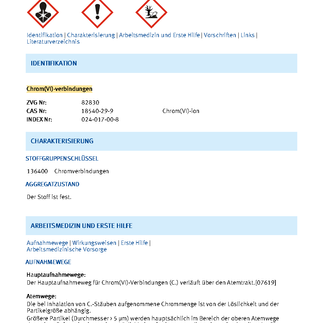Misleading, trivializing, deception
- Markus Sommer

- May 8
- 3 min read
If sustainability is just a cliché and becomes a burden, then surely it is okay to lie a little?
" The foundation's primary mission is to raise awareness of the potential of sustainable insulation solutions among decision-makers in business and politics and to initiate the implementation of concrete projects through consulting, training, and continuing education. The aim is to consider both energy-saving potential and health and occupational safety aspects ." This is how the EiiF, the "European Industrial Insulation Foundation," founded in 2009, describes itself. Its twelve founding members generate several billion euros in revenue.
Don't get us wrong, every insulation saves energy and resources, protects materials and people and the effort to keep the employees of this important industry up to date, to train and further educate them deserves full respect .
Where there is light, there is often also shadow
The asbestos scandal of several decades ago continues to have repercussions today. People are still dying, and unfortunately, there will be further repercussions.
Back then, too, people had relied on a secure material for far too long and when the burden of proof became ever more pressing and the material was no longer acceptable, a foundation was founded to
The Asbestos Information Association (AIA)
It sounds like something good
At toxicdocs.org we read about AIA: " To the layman it sounds harmless, neutral and legitimate:
Asbestos Information Association ( AIA ) .
In fact, however, it is a front organization founded by the asbestos industry in the late 20th century to defend itself against impending regulations, particularly at the federal level by the EPA."
Learn from mistakes?
Only if it doesn't affect you personally!
Back to the 21st century, to today.
Asbestos is still being substituted, dismantled and disposed of, and we can still find the miracle fiber of yesteryear in roofs and walls, but also in old factories.
If an asbestos cord or a pipe insulated with asbestos is found in the power plant area today, work is stopped immediately, the affected area is cleared, and a specialist company arrives, removes, cleans and disposes of the material.
If yellowish dust is found during the dismantling of asbestos substitutes, we now know that this dust is most likely carcinogenic, skin-absorbing and chronically environmentally harmful calcium chromate , a chromium (VI) compound , formed by an unfortunate thermochemical reaction between
chromium-containing hot part,
calcium-containing insulation material,
at temperatures above 350°C and
in oxygen-open environments.
This development process is scientifically proven, repeatedly confirmed by observations and analyses from practice and every chemist and technician will understand it, but apparently not the above-mentioned foundation for the publicisation of the potential of sustainable insulation solutions, because, as we read in the latest announcement, which we have but - like so many documents in this regard - cannot find on the foundation's website .
EiiF: "The effects of chromium(VI) on the insulation industry have not yet been conclusively clarified"???
Only the author of the foundation's letter knows whether this sentence is a technical or economic statement. In economic terms, it could be expressing concern that it is impossible to estimate the financial impact on the industry if users release the chromates when uninstalling the insulation, resulting in expensive decontamination and disposal costs .
Technically, however, the sentence could also be trying to express that the chromates should be linked to a phenomenon which, as the document states at the beginning, occurs " independently of the insulation material ." But why then is it calcium chromate , of all things, when the resulting chromium (VI) compound is nothing else?
No calcium - no calcium chromate
Other suppliers have already communicated it
As early as January 2024, the Bad Berneck-based company Frenzelit informed in its technical info 28 about " Possible chromium (VI) formation in certain
High-temperature applications "

EiiF: "As far as we know, there are currently no specific regulations for handling chromium(VI) compounds."???
With this statement, the EiiF finally underlines the presumed purpose of its appeasement paper, but here, too, we naturally want to take a closer look.
We take a look at the German GESTIS substance database and find:
When working with chromium (VI) compounds, a total of ten (!) Technical Guidelines for Hazardous Substances must be applied!!!
It seems that history is about to repeat itself, as the EiiF's influence on the market and, above all, on authorities is strong.
And so you inevitably get the feeling that at the end of the day it's all about one thing, namely what is described in the green box:






















Comments